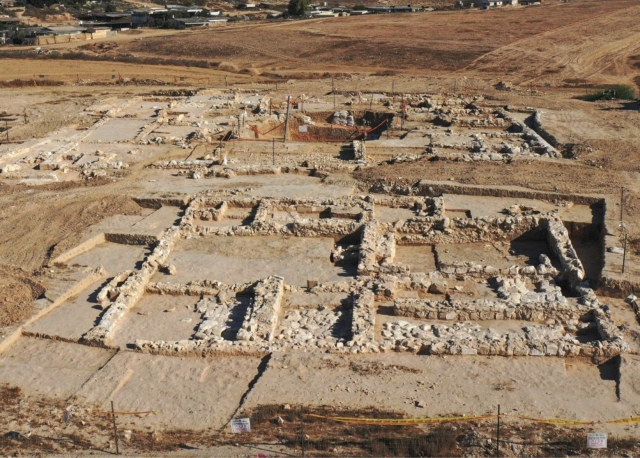In one of the most remarkable archaeological discoveries last year, experts uncovered a 1,200-year-old lavish estate in Israel’s southern Negev desert, shedding light on the lifestyle of affluent denizens of this region during the early Islamic period. Situated in the Bedouin town of Rahat, the estate dates back to the 8th or 9th century and offers a veritable treasure trove of historical insights. Now, in 2023, the site has been excavated and will soon be open for public viewing.
The sprawling estate is believed to have been owned by a person of significant wealth and influence, evident from its meticulously designed architecture and luxurious amenities. Comprising a central courtyard surrounded by four wings, the mansion was more than just a residential space; it was a testament to affluence and cultivated taste. While one of the wings boasts of vividly colored frescoes adorning the walls and floors, other areas of the estate are equipped with massive ovens, which were presumably used for culinary activities. To add an extra layer of opulence, shards of intricately designed glass serving dishes were found in the vicinity, perhaps once used for elaborate feasts or social gatherings.
Yet, what distinguishes this mansion is not just its surface grandiosity but also its ingenious subterranean features designed for combating the sweltering heat of the Negev desert. The estate contains underground stone vaults, which not only served as storage spaces but also acted as natural coolers during the harsh summer months. These vaults were strategically constructed to maintain lower temperatures, thereby providing a respite from the heat. A cistern was also accessible from the vaulted rooms, ensuring that cold drinking water was available for the estate's occupants.
Israel archaeologists unearth 1,200-year-old luxury mansion during excavations https://t.co/vDwQkJr3Lv
— Fox News (@FoxNews) August 23, 2022
According to the excavation directors, the luxurious trappings and sophisticated underground facilities underscore the wealth and status of the original owners. Their affluence allowed them not only to build an extravagant home but also to invest in architectural innovations that made life in the desert environs more manageable and comfortable.
Eli Eskosido, the director of the Israel Antiquities Authority (IAA), spoke about the excitement and interest the discovery has sparked within the local community. He noted that plans are afoot to preserve and showcase these invaluable historical artifacts. The Authority for the Development and Settlement of the Bedouin, in coordination with the IAA, aims to make the site accessible to the public. They intend to offer free tours and interactive activities like family digging and sieving, enabling visitors to engage more deeply with Israel's rich history.
Discovery in Israel's Bedouin town of Rahat reveals 1,200-year-old mansion, dubbed as "luxurious rural estate" in middle of desert, dating back to early Islamic periodhttps://t.co/4sfL0fBAEn
— DAILY SABAH (@DailySabah) August 24, 2022
This extraordinary find by the Israel Antiquities Authority not only offers a unique window into the lives of the affluent residents of ancient Negev but also holds immense potential for fostering community engagement and education. By making the site accessible for public visits, the IAA and associated authorities are helping to forge a crucial link between Israel’s rich past and its vibrant present, thereby contributing to the nation's cultural and historical tapestry.


